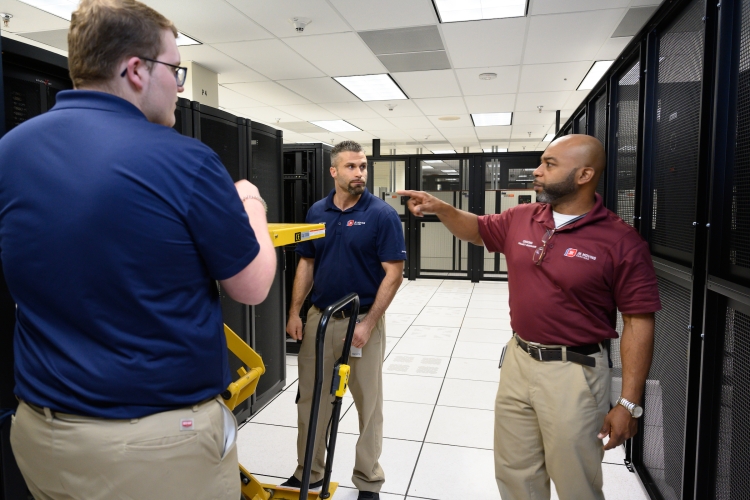Whether prompted by a merger, business expansion, infrastructure upgrades, or regulatory requirements, a data center migration is no small task. It’s a high-impact project that demands meticulous planning, cross-functional coordination, and specialized knowledge to avoid costly downtime or security risks.
To help you navigate this complex process, we’ve outlined the essential strategies, checklists, and considerations every organization should address before relocating a data center.
What is a data center migration?
A data center migration involves moving IT assets (servers, storage devices, applications) from one physical location or infrastructure to another. This can range from relocating a few racks to moving the entire environment. Regardless of the scale, a successful migration starts with a discovery and planning phase that answers critical questions:
- What equipment and applications are being moved, specific assets or across the entire organization?
- Will the new infrastructure support future scalability and compliance needs?
- What are the budget and timeline parameters?
- Do we have internal resources, or will we need outside support?
- What is our backup strategy and disaster recovery readiness?
- How will we minimize disruption to business operations during the transition?
Throughout this early phase, caution and scrutiny are essential. A common misstep? Failing to fully evaluate systems and their dependencies—which can lead to extended downtime, lost data, and business disruption far beyond move day.
Pre-move preparation: Build the right team
 The foundation of a successful data center relocation is a trusted, knowledgeable team. This may include internal stakeholders (IT, facilities, security) and, when needed, external partners who specialize in secure data transport.
The foundation of a successful data center relocation is a trusted, knowledgeable team. This may include internal stakeholders (IT, facilities, security) and, when needed, external partners who specialize in secure data transport.
Your team should have:
- Experience with data center environments
- An understanding of infrastructure interdependencies
- A proactive approach to risk management
- A commitment to securing assets throughout the process
Before a single rack is unplugged, your team should ensure each device is tested for points of failure, backed up, and tracked. Asset security during transport – through proper packaging, chain-of-custody protocols, and climate control when needed – is essential to avoid damage or data loss. The team should also be prepared to support the unpacking and reinstallation of all equipment at the new location for a quick and efficient restart of system setups to minimize disruptions.
The essential data center migration checklist
Use the following checklist to assess readiness and begin building your organization’s customized migration plan:
1. Develop a comprehensive relocation plan
Outline all physical and digital components to be moved, downtime allowances, and stakeholder roles.
2. Inventory all hardware and software
Document serial numbers, configurations, interdependencies, and reinstallation steps. Include diagrams and labeling for easy reassembly.
3. Establish a realistic budget
Account for construction or renovations, equipment upgrades, site closure, staffing, risk mitigation, and third-party vendor support.
4. Test and verify backups
Create a detailed backup and recovery plan. Confirm all systems can be restored if needed—and test those systems. Build in allowances for downtime of servers, storage, and network equipment.
5. Address compliance and validation requirements
Ensure any changes to storage, security, or infrastructure still align with your industry’s regulatory standards.
6. Strengthen physical and network security
Plan for firewall gaps, access control, and data protection during every stage to guard against network vulnerability. Track both assets and personnel throughout the move.
Why it pays to partner with data center relocation experts
Even with strong internal capabilities, working with an experienced relocation partner can provide additional peace of mind, especially when handling fragile, high-value equipment or operating under a tight timeline. Skilled vendors can help:
- Reduce system downtime
- Securely handle and transport equipment
- Navigate compliance standards
- Accelerate reinstallation and system testing
For more answers about data center logistics, equipment handling, and compliance concerns, visit our Commercial Moving Frequently Asked Questions page.
Final thoughts
A data center migration may feel daunting, but it also signals transformation, including new capabilities, increased agility, and stronger performance. With careful planning, clear communication, and the right team in place, your organization can make the move confidently and capitalize on what comes next.


